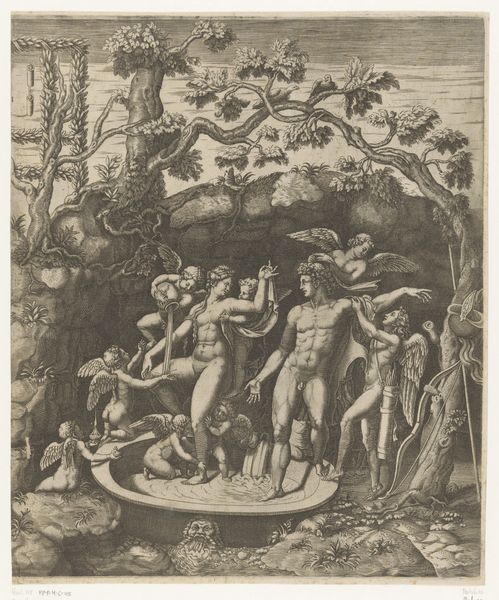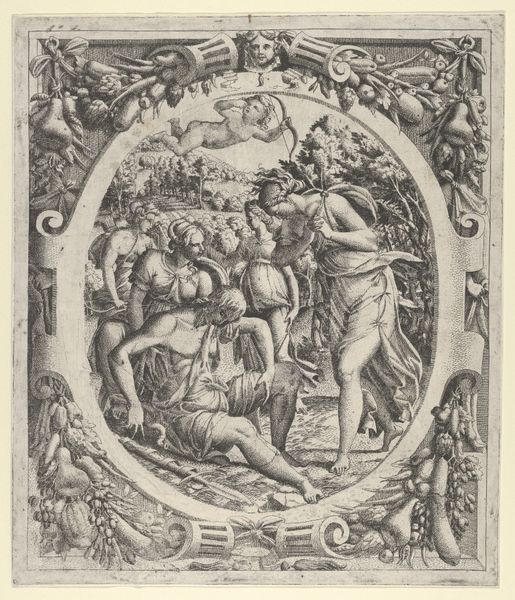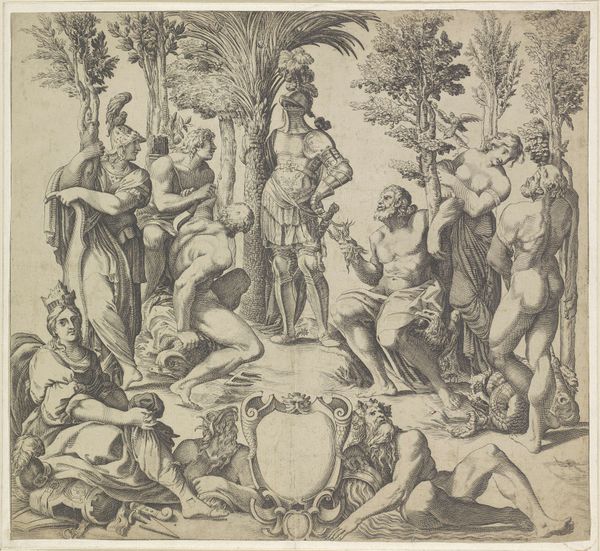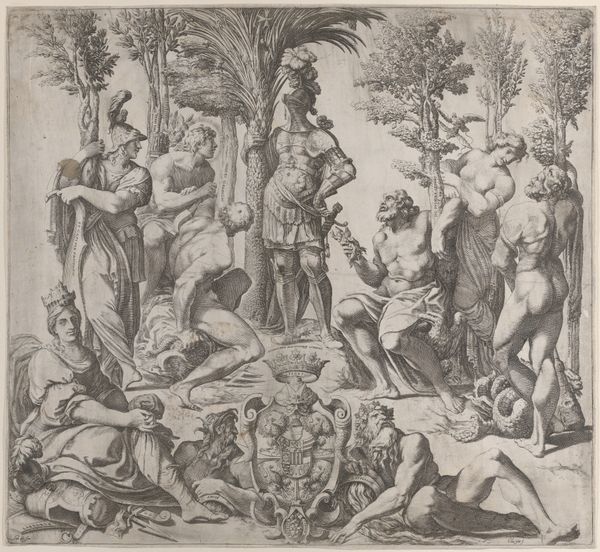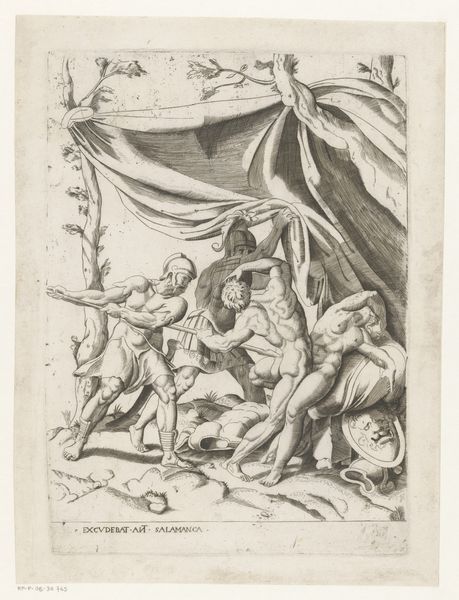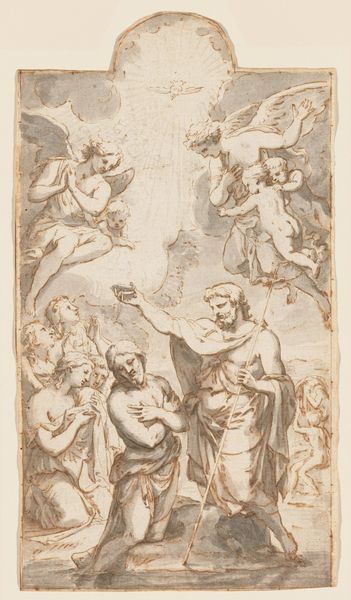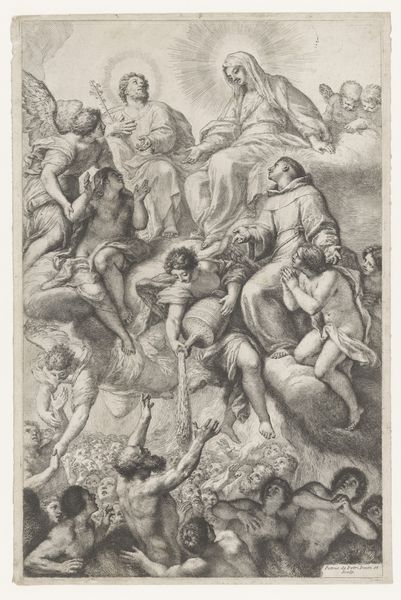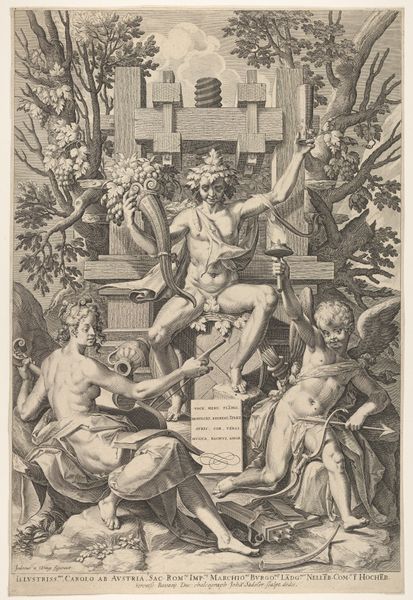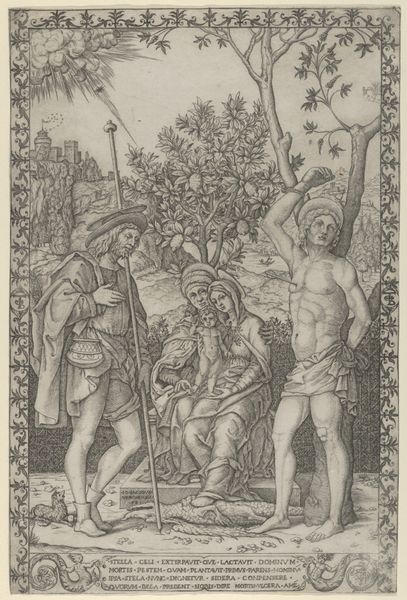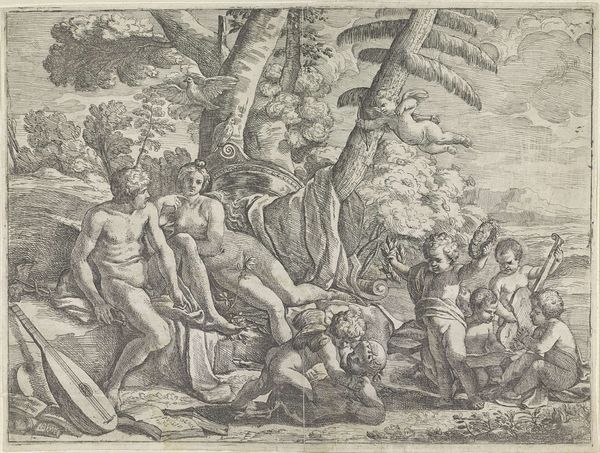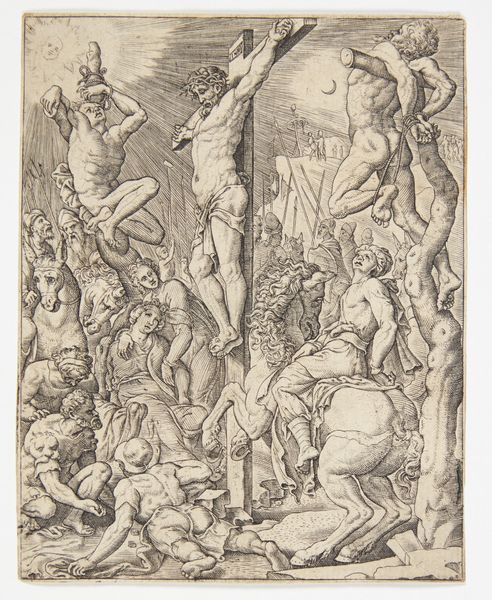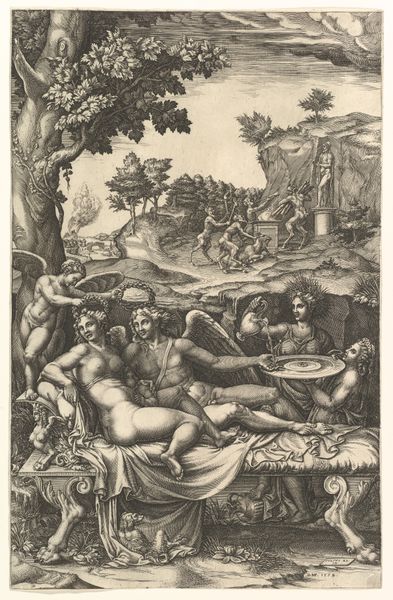
drawing, print, paper, engraving
#
drawing
#
allegory
# print
#
mannerism
#
paper
#
history-painting
#
engraving
Dimensions: 246 × 180 mm (image); 271 × 180 mm (plate); 280 × 187 mm (sheet)
Copyright: Public Domain
Curator: Before us is “Parnassus, plate 4 from Parnassus Biceps” by Robert Boissard, an engraving on paper dating back to 1601. Editor: My first impression is one of carefully arranged layers. There's a definite hierarchical structure to how the figures are placed, with the lower figures forming a solid base. A classic pyramidal composition, even. Curator: Indeed. We see the Muses positioned above Apollo and other figures, beneath the inscription “Parnassus Mons Musis Sacer.” The artist's use of line, so critical to engraving, articulates the musculature, the folds of drapery, and the textures, from the leaves to the skin. There's an interesting balance between detailed areas and more sparsely rendered spaces, which guide the eye. Editor: What’s intriguing to me is this representation of Parnassus. In a period of increasing classicism, why such a busy, somewhat overwrought composition? Is it referencing, or perhaps critiquing, humanist interpretations of the classics? It is after all, Mannerist. Curator: The engraving's allegorical dimension should be considered in that period context, though, shouldn’t it? Note the Latin inscription; Boissard's audience would certainly grasp these iconographic conventions. Apollo playing his lyre signifies harmony, the nine muses embody various arts, like history or poetry. There is a clear intention to portray not only a visual spectacle, but also an intellectual and historical narrative. Editor: You're right. I see that even the print's existence as one plate of a series contributes. This piece participates in the circulation of knowledge, doesn’t it? And, the figures' poses and exaggerated musculature feel performative, self-aware perhaps, of their representation. Curator: I see that awareness in the contrast between the ideal of classical forms and the density of its composition, yes. Editor: Ultimately, that tension for me is what makes it such a lasting work. It manages to embody both classical aspiration and a certain Baroque excess. Curator: An excellent point. And the tight control of the medium speaks to a world of careful visual analysis and learned appreciation.
Comments
No comments
Be the first to comment and join the conversation on the ultimate creative platform.
